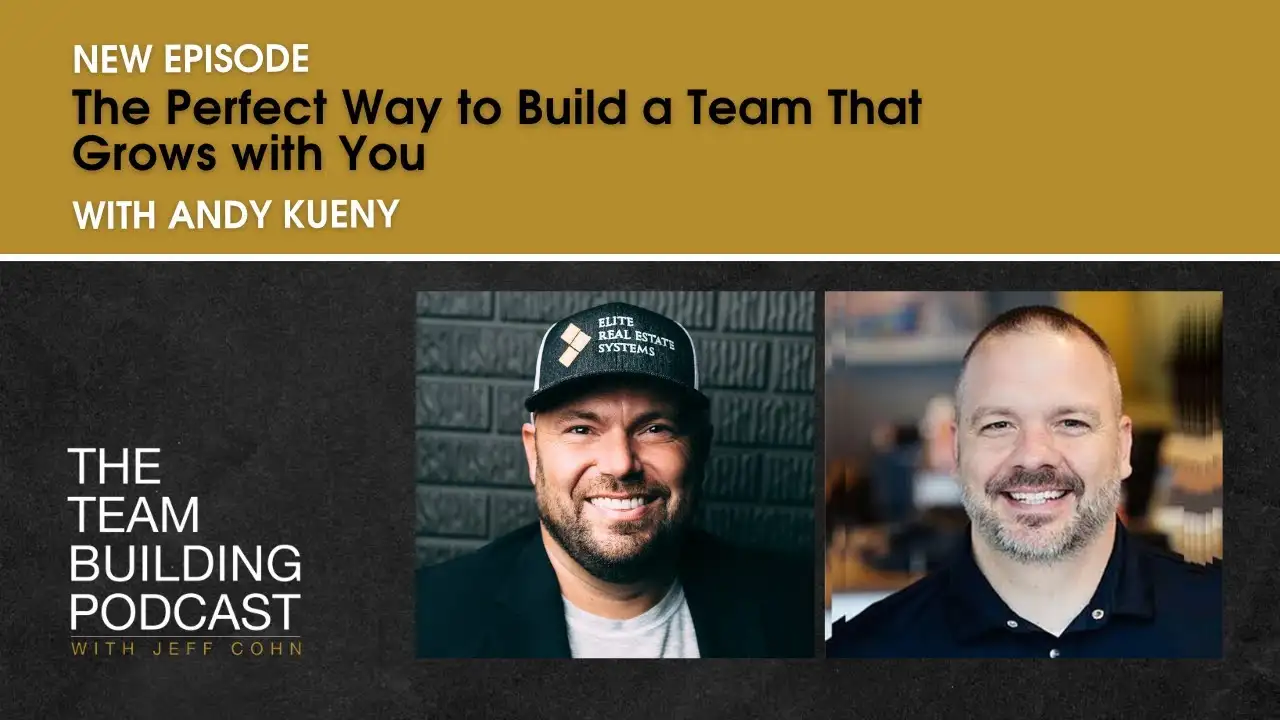What are the 7 levels of communication, and how can they help my real estate business? If you are looking for an effective strategy to attract more leads, retain loyal clients, and secure top talent for your business, the secret lies in these seven communication levels!
Communication is absolutely essential when you’re at the helm of a business. It’s the backbone of every interaction, from nurturing potential leads to maintaining long-term relationships with your clients.
In this Team Building Podcast episode, Jeff shares with us the 7 levels of communication that will not only strengthen your company but also leave an unforgettable impression on everyone you interact with.
Implement them and watch your business flourish and retain top clients and talent.
How are you communicating effectively?
Have you ever paused to evaluate your communication strategy? How well are you reaching out, connecting, and engaging with your target audience?
If these questions have you drawing a blank, there’s a high chance your business communication efforts are sailing without a compass.
A communication strategy is not just about conveying a message; it’s about sharing the right message at the right time, to the right people, and through the right platform.

The 7 Levels of Communication
If you still don’t have a communication strategy, don’t worry! Transforming this scenario is entirely within your control! Here are the 7 levels of communication that you can implement to start conveying the right message at the right time.
7- Advertising
While having a strong advertising strategy and social media presence can boost your business visibility, it’s crucial to understand that, for real estate, social media is as effective as billboard and news ads: it is all about visibility.
While visibility is an important element and the first step in the communication process, we shouldn’t settle just with a social media strategy.
For industries like real estate, your focus should also be on tracking and connecting with people.
6- Direct Mail
This method is often criticized for its limited capacity to engage recipients emotionally or invite questions.
It’s perceived as just paper, often discarded by recipients, and while all that is true, direct mail can be a powerful touchpoint in your communication strategy.
Direct mail puts your business in your target audience’s view, it reminds them who you are and that you are available for communication.
5- Electronic Communication
Electronic communication includes email blasts, weekly newsletters, press releases, and more.
Before sending any mail, first identify your goal and the email list you will be sending it to; you want to make sure people are actually interested in what you have to say.
Additionally, use an email address that reflects your business name to maintain professionalism and brand consistency.

4- Handwritten Notes
These are perfect for established clients. A handwritten note at least once a year can convey gratitude for loyalty and referrals.
Such personal touches can enhance your reputation as a caring and attentive business, encouraging further referrals.

3- Phone Calls
This level engages your leads directly. Having a real conversation allows you to understand their needs better.
After the call, consider sending a text with an updated contact card to keep your details handy for them in case they need you or need to share your info with someone who might.

2- Events and Seminars
Be it agent training, charity events, community meetings, or investor classes, these platforms offer invaluable opportunities to showcase your work ethic, values, and expertise.
They serve as a real-time canvas for people to observe and interact with your business, thereby gaining first-hand insights into what sets you apart

1- One-On-Ones
This is the pinnacle of communication. A one-on-one meeting allows for authentic connections and meaningful conversations. It’s about investing in relationships, not directly selling.
Remember that your body language is also a form of communication. Utilize effective postures and non-verbal cues to enhance your communication. These subtle signals can significantly contribute to fostering an open, engaging, and productive dialogue.
Remember, the art of communication is all about balance. Employ these levels wisely and watch your business relationships thrive.
How to Implement the 7 Levels of Communication
Implementing the seven levels of communication requires a strategic and patient approach.
The goal is to gradually guide your leads through this communication process, starting with visibility, then building trust, and eventually fostering genuine connections.
Start Gradually
Initiate contact with new leads using the first level of communication, like advertising. This stage is about gaining visibility in your target market.
As you progress, slowly introduce more personal forms of communication like direct mail, email, and phone calls.
Follow Up
Consistency is key when nurturing leads. Regular follow-ups help maintain your presence in their minds.
However, it’s also crucial to assess whether a lead is worth your continued investment. If there’s no potential for conversion, it might be best to focus your energies elsewhere.

Evaluate and Reflect
Regularly evaluate your communication strategy to identify what’s working and what isn’t. Each level has its unique purpose and effectiveness. Reflect on your outcomes and consider if you’re utilizing the right tools for each situation.
Remember, implementing these levels is not a one-size-fits-all approach. It requires constant refinement based on feedback and results, but as long as you know your goal and audience and form genuine connections, you can build a strong communication strategy.




